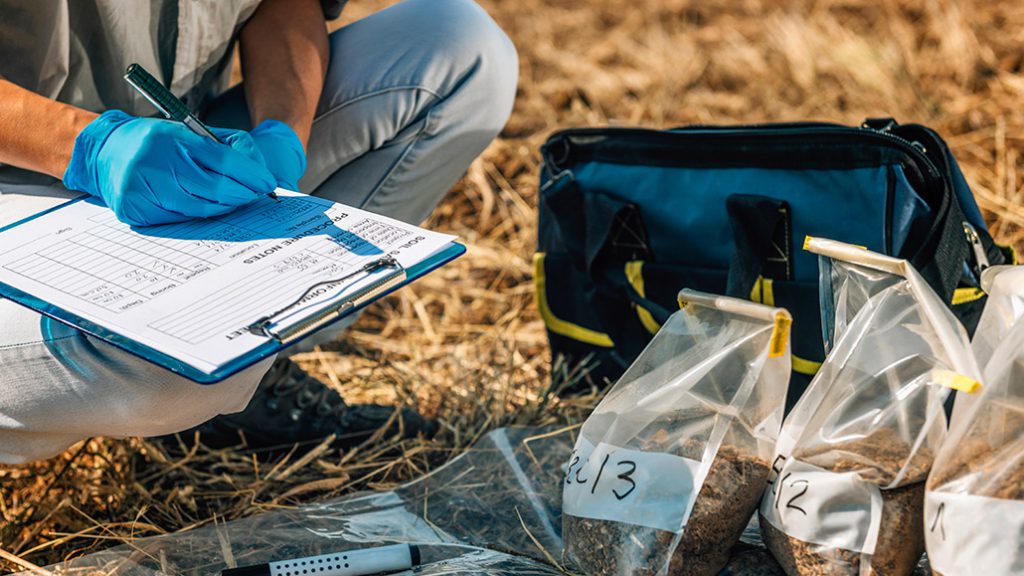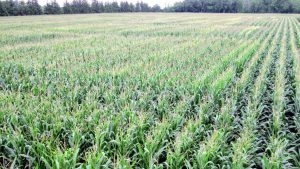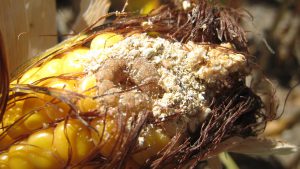Asset or liability: soil fertility
4R NUTRIENT STEWARDSHIP

BUSINESSES HAVE ASSETS and liabilities and a farm business is no different. While land is a primary asset to a farm business, one of the most important and underrated assets is a farm’s soil. Soil is the building block to major management decisions, especially surrounding fertility. When you invest in your soil, we can see the benefits and ability to enhance profitability. When forgotten about, your soil asset can quickly become a liability that hinders profitability. Investment in your soil starts with a soil sample. While soil sampling may seem basic, there are still those that struggle to see the value of soil sampling on their farm.
Across Ontario, we are trending in the right direction with more farmers beginning to see the benefits of soil sampling. However, there are those that balk at soil sampling. Here are some of the typical arguments from farmers against soil sampling.
Soil sampling is just an expense
Are we talking about the soil sampling activity and what it costs, or crop production and profitability? To some, soil sampling may offer one of the best returns on investment (ROI) on the farm. Soil sample tests give a better understanding of your soil’s fertility and can allow better decision making to maximize productivity. While some may balk at the cost associated with soil sampling, the information provided outweighs the cost and is an investment in your soil. Spending hundreds of dollars on a soil sample to know the ideal placement of those thousands of dollars of fertilizers is money well spent.
I can still grow a crop without soil sampling
Soil testing, much like a financial balance sheet, indicates the health of the operation. Some may avoid soil testing and rely instead on applying nutrients based on known crop removal rates. Using a general soil fertility plan or applying nutrients at crop removal each year has its own risks.
If you don’t soil sample and your soil test happens to be low, then applying to crop removal is not enough and you are not optimizing yields, leaving money on the table. If you don’t soil sample and your soil test happens to be high, applying to crop removal may prevent you from optimizing yield and prevent you from maximizing nutrient use.
It is nearly impossible for an agronomist to make accurate nutrient recommendations when you don’t have a soil test. Soil sampling gives us the necessary foundation to tailor our nutrient needs in a very site-specific way, so a one-size-fits-all approach is not relied on.
I soil sampled once 10 years ago and it didn’t fix my problems
You would not make financial decisions today from a balance sheet from 2010 and you should not make crop nutrient plans with a soil test that old either. Soil fertility is a long-term program and requires constant adjustment to attain your goals. A single soil test report can be good information. A series of soil test reports over the years is better as it can reveal trends in soil fertility and allow for adjustments. The reality is soil fertility is a long-term program and problem areas may not be rectified immediately. Building and maintaining your soil fertility program starts with regularly updated soil test results and adapting to site specific variables to maintain a balanced program.
ONTARIO 4R NUTRIENT STEWARDSHIP CERTIFICATION
In Ontario, the 4R Nutrient Stewardship certification standard was created as part of a voluntary initiative to improve water quality while optimizing the crop uptake of nutrients and minimizing nutrient losses. The 4Rs are based on the principles of the Right Source at the Right Rate, Right Time, and in the Right Place.
Soil sampling is the foundation of knowing and understanding soil fertility and associated crop nutrient plans. Without a soil sample, the 4Rs cannot be achieved.
The 4R standards specify that a soil test needs to be conducted at least once every four years. And certified crop advisors (CCAs) involved in implementing and following these standards agree it is the foundation of any effective 4R plan.
When was the last time you soil sampled? Was it longer than four years ago?
Talk to your CCA or agricultural retailer about questions you have, or soil sampling services they can offer to help update your soil tests.
Michael Buttenham is the sustainability and environment lead for Grain Farmers of Ontario. •




















